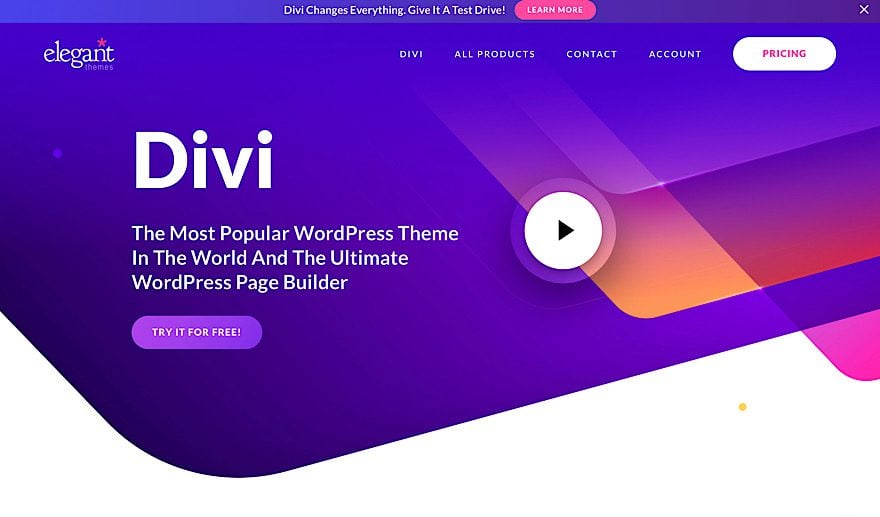Content marketing isn’t a new concept. Marketing professionals use this strategy to grow engagement and improve conversion for companies of all shapes and sizes. With the growth of professional blogging and blogs as part of a brand’s marketing strategy, content marketing has taken a spot front and center.
The person with the task of taking on a content marketing strategy depends on the size of each brand. Large corporations have a CMO, a chief marketing officer who can do the job with his team or hire a content marketing specialist. Smaller companies hire consultants and create small content marketing teams.
Yet, not everyone’s brand is large enough to hire outside help for a content marketing strategy. As long as you know what the basics are for good marketing strategy, you can take it upon yourself to create one for your blog or brand.
What does it take to get started?
Glad you asked! Well, the first step is to build a content marketing foundation, made up of topic clusters and pillar pages. Believe it or not, the largest part of a content marketing plan stems from these two concepts.
In this article, we define topic clusters and pillar pages in relation to a content marketing strategy. Also, we use examples of fictional businesses to see how the two concepts work together. Plus some great videos from content marketing experts we love.
Let’s dive in.
What Are Topic Clusters?
Every content marketing strategy is based on a set of topic clusters. These are the foundation of the entire strategy.
But, what is a topic cluster?
Think of a topic as a category or section of what a brand or blog offers an audience. At first thought, most people think that topic clusters apply only to blog posts. When in fact, topic clusters include all types of content. From landing pages, to blog articles, social media posts, email newsletters and even offline printed assets.
What all these pieces of content have in common, is that they all belong to one topic cluster.
How Are Topic Clusters Created?
To create topic clusters, analyze the business and its brand message. Take into account what the business aims to achieve and what it has done it so far to reach growth goals.
Before creating and strategizing topic clusters, conduct a content gap analysis using the ideal client persona. A gap analysis finds the specific information which the ideal audience wants and the company can provide.
These gaps turn into topics. Which in turn, become topic clusters.
Another approach is to look at existing content and browse through analytics results. Group the content by theme or category and see which group performed the best. Each group is then turned into a topic.
Here’s a video from Hubspot to help you get a better idea of the whole concept.
Fictional Topic Cluster Creation Example:
A fictional handmade vegan leather online shoe store conducts a gap analysis to create topic clusters.
A handmade vegan leather shoe company hires a content marketer to improve their company’s growth. They conduct a content gap analysis to find what their audience wants but isn’t receiving. The purpose of a gap analysis is to find the ideal clients’ pain points that aren’t being resolved. If a pain point is found with no good solution coming from the brand, that is turned into a topic for a cluster.
The content marketer finds that people who buy vegan leather shoes are not sure about how to care for their shoes properly. The first topic for the new set of topic clusters is “How to care for vegan leather”.
Putting Together The Topic Cluster / Main Topic – Subtopics – Content
Once a topic is defined, it’s time to create the cluster.
Topic clusters have one main topic at the top and then branch down to subtopics and occasionally sub-sub topics. Each piece of content for the topic fits into one of the branches of the main topic. Imagine the topic cluster as a web or flowchart.
Some subtopics to the main topic of “How to care for vegan leather” could be:
- Caring for vegan leather shoes
- Washing vegan leather clothing
- Tools and products to care for vegan leather
Then, create the content. For example, a number of blog articles for the vegan leather shoes subtopic:
- What to do when your shoes get wet in rain or snow.
- How to prevent cracking in the material of your vegan leather shoes
- Are vegan leather shoes really waterproof?
From the content in the blog posts, designers create infographics, videos, printables, and social media graphics. The team sends newsletters, print infographic postcards to send with shoe deliveries, write guest posts for other relevant sites, etc.
All the content created for that topic belongs to that topic cluster. The web grows and expands as content is created for each topic cluster.
Want to go deeper into creating topic clusters? Read Alfred Lua’s post about how he created the for the Buffer blog.

But a topic cluster is not complete without a pillar page.
What Are Pillar Pages?
If the topic cluster is a web, pillar pages are the spiders’ nests. Looking back at how a topic cluster has one main topic and subtopics, a pillar page is the basis for each of them.
A pillar page has two functions:
- To offer valuable calls to action that will grow a brand’s business through leads and sales.
- To exist as a valuable inbound link from all the content created for that topic cluster.
In the case of the vegan leather shoe store, their new pillar page is one about how to take care of vegan leather. On that page, the company can showcase lots of valuable information about the topic. From tips and tricks on how to take care of their shoes, to informational videos and a selection of their favorite products that help take care of vegan leather. Of course, there would also be a section with their shoes for sale in a way that complements the topic of taking care of vegan leather shoes.
Then, as new content is created to supplement the topic, the pillar page is added as a link. These could be blog articles, social media posts, YouTube videos, Instagram Stories, etc. The idea is that the connection between a pillar page and the content created for that topic cluster is in constant back-and-forth motion with each other.
How Are Pillar Pages Created?
The easiest way to imagine the creation of a pillar page is to think of landing pages. Landing pages are pages on a website that serve a specific purpose. From gathering emails via a downloadable product to selling a specific line of physical items. In many ways, a landing page can be a pillar page.
Optimized pillar pages include short and long keywords pertaining to the topic cluster, custom videos, numbered lists like how-tos or frequently asked questions, calls to action, and lots of valuable content that will not only get the page high on search results but also provide a great resource for clients. Use storytelling techniques to reach your audience at a relatable level. And make sure your content is properly optimized with the proper schema (like using a FAQ plugin to include Frequently Asked Questions on pages in a way that is digestible for Search Engines).
For example, on the Elegant Themes website, Divi has its own pillar page.

Topic Clusters And Pillar Pages – Rinse And Repeat
A content marketing strategy is not complete with only one topic cluster and one pillar page. A good strategy needs at least three or more. Subtopics can also have pillar pages! The total number depends on the size of the company, their blog, and the number of products offered.
Analyze conversions on all the pillar pages and the content that stems from them. Conduct A/B testing on copy and visuals to see what is working and what isn’t.
Repeat what works and improve what doesn’t.
The Importance Of Valuable Content In Topic Clusters And Pillar Pages
Even though the foundation of content marketing is topic clusters and pillar pages, they mean nothing if their value isn’t top-notch. Only well-crafted and optimized content will make a dent towards a company’s growth.
Remember, topic clusters and pillar pages can’t be pulled out of thin air. The initial market research and gap analysis must be detailed and in-depth. Use a design thinking approach for research and analysis. Tap into the clients’ and consumers’ real needs. Be empathetic to their experiences and try to put yourself in their position. It’s the best way to really know if the gap analysis is true to your niche.
Last Thoughts On Content Marketing Basics
Content marketing is not a technique that should be taken lightly. There are many steps to follow for a successful strategy and knowing how to create topic clusters with pillar pages is key. Don’t forget to infuse all content with value and optimize for SEO.
Have you applied a content marketing approach to your business? Even a small creative freelance brand can benefit from a content marketing strategy. Share your thoughts in the comments and get the conversation started about content marketing basics.
Featured Image via Astibuag / shutterstock.com









Hello Orana,
This is not a simple guide but an advanced guide to topic clusters. Putting together these clustered topics is an important part of writing which also includes SEO Optimization and keyword research.
A great article and content to learn a lot from a single post.
Regards,
Pam